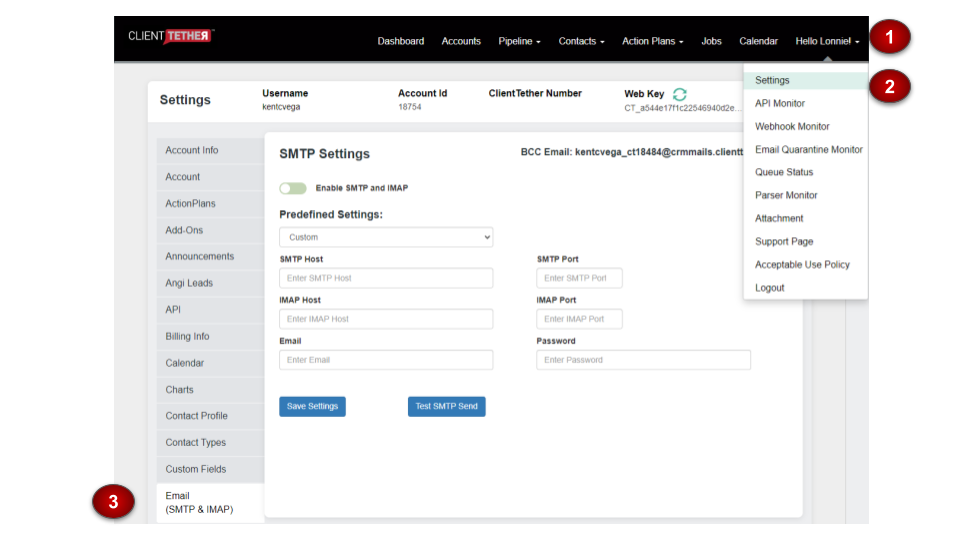SMTP Email Authentication Guide
March 15, 2024Introduction
In the digital age, ensuring that your emails consistently reach your clients’ inboxes is vital. That’s why we’re providing this guide—our system offers options to help you achieve the highest level of deliverability. While our standard Email Server Authentication using SPF and DKIM is effective for many, integrating SMTP settings offers another path to enhance the reliability and trustworthiness of your email communications. This guide serves as an alterative to our SPF and DKIM authentication methods, providing you with the flexibility to choose the best solution for your unique email needs.
SMTP Authentication
Why Use SMTP?
Simple Mail Transfer Protocol (SMTP) is an industry standard for sending emails. Unlike default mailing methods, using SMTP authentication can significantly improve your email deliverability. It does this by allowing you to send emails through your own SMTP server, which is already authorized to send your domain’s emails. This not only helps deliverability but also keeps emails out of the spam folder.
Setting up SMTP Authentication
Setting up SMTP authentication involves specifying an SMTP server, port number, and the credentials for the email account from which you’re sending emails. This ensures that your emails are sent securely and are seen as legitimate by email providers.
Step-by-Step Instructions

- Access SMTP Settings: Log into your ClientTether Account and navigate to Settings > Email SMTP settings area shown in the images above.
- Predefined Settings: Select a predefined setting if you’re using a common email provider such as Gmail, iCloud, or Outlook. If you have a custom provider or specific SMTP server you wish to use, select “Custom.” If you select Outlook or Gmail, the system will prefill the rest of the information, so all that remains is for you to login to those services. Otherwise…
- Enter Your SMTP Details:
- SMTP Host: Enter the address of your SMTP server.
- SMTP Port: Enter the port number for SMTP (commonly 587 for TLS or 465 for SSL).
- Email: Enter the email address you’re using to send emails.
- Password: Enter the password for your email account.
- IMAP Settings (if applicable):
- IMAP Host: Enter the address of your IMAP server (if different from SMTP).
- IMAP Port: Enter the port number for IMAP (commonly 993).
- Save and Test: After entering your details, click “Save Settings” and then “Test SMTP Send” to ensure everything is set up correctly.
Testing and Verification
Once you’ve saved your SMTP settings, it’s important to verify that emails can be sent and received (if IMAP is set up) correctly. Use the “Test SMTP Send” feature to send a test email to yourself. If it arrives successfully, your SMTP setup is good to go!
Troubleshooting
If you encounter any issues with sending the test email:
- Double-check your SMTP and IMAP settings for any typos.
- Ensure that the email and password are correct and correspond with the SMTP server.
- For Gmail or Outlook make sure you have logged into the correct account.
- Verify that your email provider allows SMTP 3rd party access and that you’ve used the correct server and port.
Conclusion
With SMTP authentication in place, you’re set to achieve reliable email deliverability. This guide complements our SPF and DKIM authentication methods, providing you with comprehensive options to ensure your emails consistently reach their intended targets.
For any additional support or questions, please reach out to your email server provider to verify settings. We are committed to your success and to providing the best tools and support to achieve it.